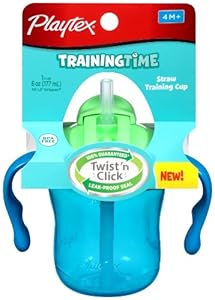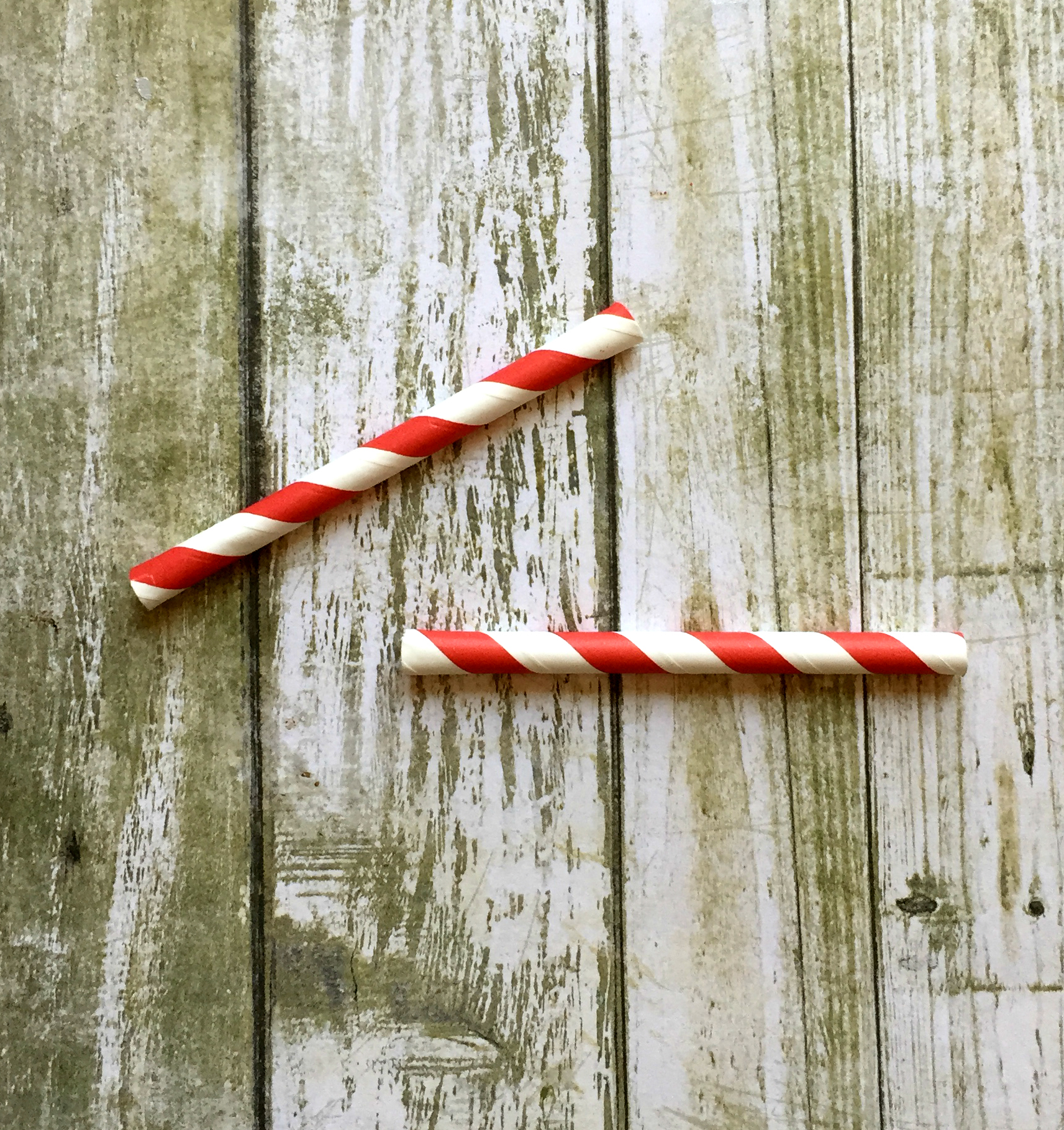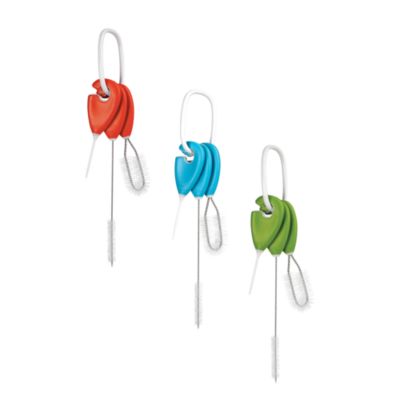We recently introduced a straw sippy cup to our 9-month-old. I think the traditional spout-style sippy cup might be easier for babies to learn to drink from, but we wanted to skip the spout cup and start directly with the straw cup for several reasons. One, I like that the straw can be covered when not in use, which seems more sanitary than a sippy cup where the spout would be exposed to whatever else I have in my diaper bag. Two, I wanted C to learn to drink from a straw so that if we're at a restaurant, on a trip, at a friend's house, etc. and forget the sippy cup, he can get by with a normal cup with lid and straw. Three, I didn't want C to get used to tipping a cup up to drink from it (like you would with a traditional spout sippy cup) since this can make it harder (read: messier) for them to learn to drink from a normal cup later on. Finally, I've read that using a straw cup helps their oral development and the muscles they'll use for speech. I have no idea whether or not this is true, but it seemed like another positive of the straw cup over the sippy cup.
Using a straw cup can be a steeper learning curve than a sippy cup, so babies may not be ready for a straw cup until around 9 months (this was the case for us), while some babies transition to a sippy cup a month or two earlier. However, since babies shouldn't consume ANY water before 6 months of age, and only limited amounts of water until 1 year (2-6 ounces a day), waiting until 9 months to introduce a straw cup isn't a big deal. Their primary source of hydration (and nutrition) continues to be breastmilk and/or formula until they reach 12 months; the introduction of a straw/sippy cup with water is really more for practice with drinking from a cup and the routine of drinking with meals than it is for hydration.

Right now, we are using the Playtex Training Time Straw Trainer Cup (6 ounce). This version comes with removable plastic handles that make the cup easier for baby to hold; they come off when you've outgrown the need for handles, or you can also switch to the Playtex Anytime Straw Cups (9 ounce), when your toddler is ready for a larger volume and a cup without handles. We bought both versions at Babies R Us while they were on sale for buy 1, get 1 50% off. These straw cups are dishwasher safe and have a cover that goes over the straw portion when not in use. If you read a million Amazon reviews (like I did), don't worry about the reviews which talk about the straw that doesn't reach the bottom of the cup -- that must have been an older version of this product, because the straws in our cups reach all the way to the bottom. Are they "leak proof"? If you hold the cup upside down, it doesn't leak; however, when C SHAKES it upside down, water comes out....but I think that's probably likely of any sippy cup (they're leak proof, not shake-proof). We also have to make sure that the lid is securely "clicked" on, because otherwise water will pour out of it! On the whole, though, no complaints -- lots of friends have gone through multiple brands of sippy cups trying to find the "right" one, and I feel no urge to try another brand, if that's any kind of testimonial for this cup.
When we first introduced the straw cup to C, I had (unreasonable) hopes that he would instantly figure it out. NOPE. It took some Googling about how to each your baby to drink from a straw cup to figure it out. Here's what worked for us. I should also mention that we did all of this with room temperature or slightly cool water - not cold water. Since he's used to warm milk, it just seemed like one more hurdle to get used to drinking something cold (not to mention that he ended up soaked the first few times we tried it, which would have been startling if the water was ice cold!)
1. Teach them that water comes from a straw
 |
| Via |
Stick a normal straw in a glass of water, put your finger over the top of the straw, and, with the straw over/in your baby's mouth, release your finger so that the water falls in their mouth. This will help them to associate that liquid comes from a straw, and that a straw is for drinking. Repeat this a few times.
2. Teach them that they need to suck the straw
 |
| Via |
Cut a normal straw very short - about 4". The shorter the straw, the easier it is to suck liquid up; a long straw is longer for them to have to suck the liquid and they may give up before the water makes it to their mouth. A fast-food straw is good for this, since they are usually a little bit wider than the drinking straws you buy in a box at Target. Pour some water in a cup (it helps if the cup is short), insert the straw, and put the other end of the straw in baby's mouth. Make sure to get a good amount of the straw in their mouth (more of the straw than if you were drinking from it) - at least 1/2", maybe closer to 1". Since they're used to drinking from a bottle nipple, they are used to feeling it on their tongue and the roof of their mouth to trigger their sucking reflex. Once you get enough in their mouth (but not so much that they gag), they will probably try to suck from it. If they don't, gently help them close their lips around the straw. You may need to go back to step 1 to remind them that water comes from a straw. If they still don't get sucking from a straw, they're probably not quite ready for the straw cup; we tried a few times over a period of a week or two before C got the hang of it. Be prepared for them to be soaking wet - once they successfully suck, they will overflow their mouth with water, since they're used to how hard they have to suck from a bottle and a straw flows much more easily than a bottle nipple!
3. Introduce the straw cup

Once they can drink from a straw, let them go to town with the straw cup! The leak-proof feature of the straw cup makes it much more difficult to suck from than the normal straw (I tried it myself to get a feel for it), so they will not figure out how to drink from the straw cup until they can drink successfully from a normal straw that doesn't have the leak-proof flow restriction. You may need to help hold the cup and direct the straw to their lips for the first few days/weeks; eventually, they will figure out how to hold the cup by the handles and even reach for it on their own. Don't be discouraged if they successfully drink from it one day and forget how the next day; we had to cycle through steps 1 and 2 a couple of times if we went a few days between use of the straw cup, but it was a quick refresher and he was good to go!
Start introducing the straw cup at mealtimes (we never fill it more than half full, so about 3 ounces of water, and he rarely drinks half of it); just leave it on their high chair tray within reach so that they can reach for it if they want it. You can offer the cup to them or hold it to their lips a couple of times if they don't reach for it, but don't force it - they don't really need the water and they'll reach for it on their own when they're ready. C was about 9.5 months and overnight he just started reaching for his cup during meals and drinking from it on his own. After a few days of this, we started sending the straw cup to daycare for him to have during breakfast and lunch there (we use the Inchbug rubber band labels from his bottles to label the straw cup, too).
A few other thoughts: babies do not need juice (other than very small/infrequent quantities for constipation, etc.) Even when C is a toddler, we plan to treat fruit juice like Kool-aid or soda in our home -- we will allow it occasionally for treats (birthday parties, etc.) but not as an everyday beverage. Juice, although healthier than Kool-aid or soda, is still full of (natural) sugar without any of the other benefits of eating the whole fruit (fiber, etc.) It is also not good for their teeth to sip on juice all day. Stick to water and you won't have to deal with breaking the juice habit!
Similarly, we do not allow the bottle or straw cup in the crib. Right now, bottles and the straw cup are only offered at mealtimes; as he gets older, we will allow him to have water in the straw cup whenever he wants it. After he is a year old, we will begin offering milk in the straw cup and transition off the bottle, but we still will not let him have it in the crib -- again, it's not good for their teeth to sip on any drink besides water for an extended period of time, especially at night after we've brushed his teeth.

Lastly, a tip for cleaning -- this set of OXO sippy cup brush tools is amazing for the clean freak like me! While the parts of the Playtex cup are all dishwasher-safe, we don't currently own enough of them for how often (or not) we run the dishwasher, so we usually end up handwashing them. The long, skinny brush is perfect for cleaning the inside of the straw!


No comments:
Post a Comment